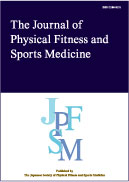Volume 5, Issue 4
Displaying 1-7 of 7 articles from this issue
- |<
- <
- 1
- >
- >|
Review Article
-
2016Volume 5Issue 4 Pages 267-273
Published: September 25, 2016
Released on J-STAGE: October 03, 2016
Download PDF (993K) -
2016Volume 5Issue 4 Pages 275-286
Published: September 25, 2016
Released on J-STAGE: October 03, 2016
Download PDF (3388K) -
2016Volume 5Issue 4 Pages 287-299
Published: September 25, 2016
Released on J-STAGE: October 03, 2016
Download PDF (1668K)
Short Review Article
-
2016Volume 5Issue 4 Pages 301-307
Published: September 25, 2016
Released on J-STAGE: October 03, 2016
Download PDF (1148K) -
2016Volume 5Issue 4 Pages 309-312
Published: September 25, 2016
Released on J-STAGE: October 03, 2016
Download PDF (964K) -
2016Volume 5Issue 4 Pages 313-317
Published: September 25, 2016
Released on J-STAGE: October 03, 2016
Download PDF (975K)
Regular Article
-
2016Volume 5Issue 4 Pages 319-327
Published: September 25, 2016
Released on J-STAGE: October 03, 2016
Download PDF (1636K)
- |<
- <
- 1
- >
- >|
